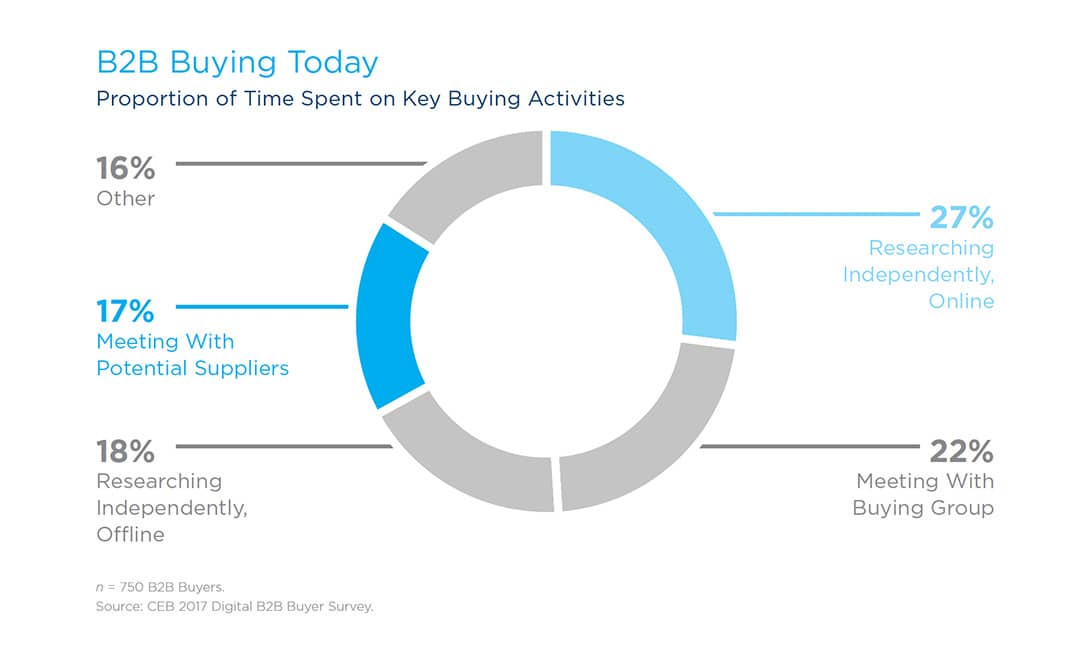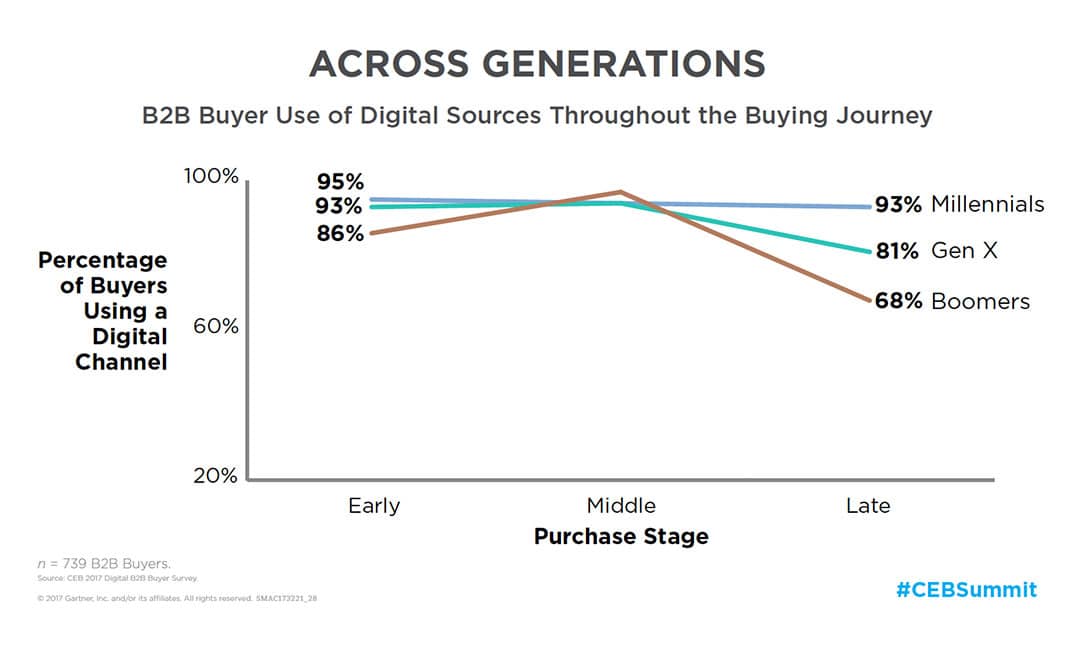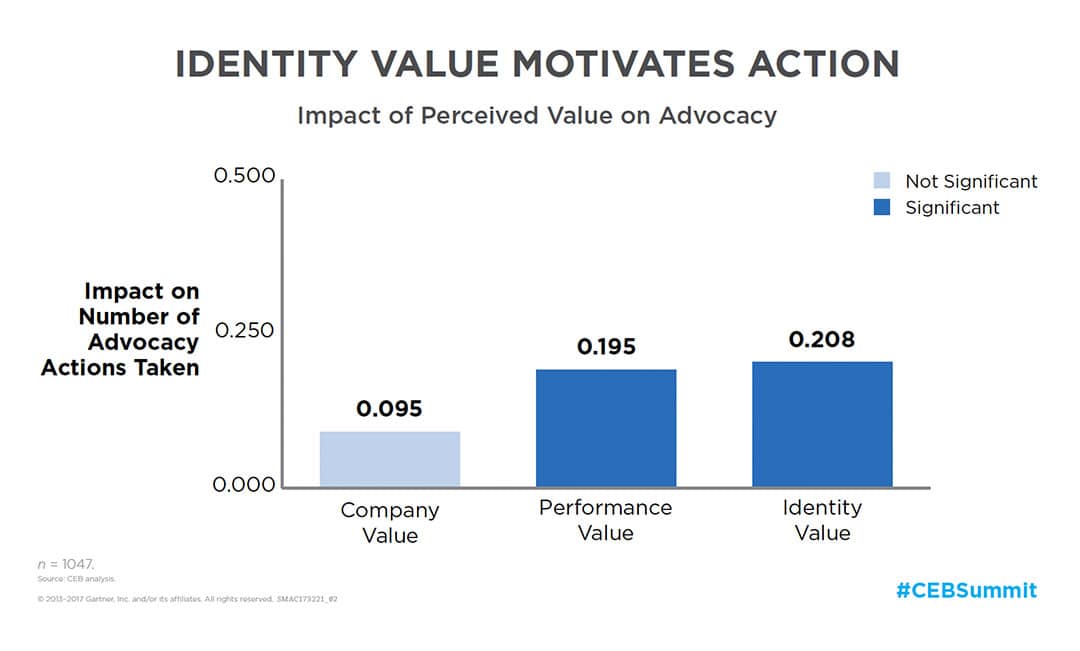
CEB Summit 2017: Brand Rules Across the Buying Journey
The 2017 CEB Sales and Marketing Summit took place October 17 to 19 in Las Vegas. For two and a half days, I binged on presentations, research findings, case studies and networking with peers who all share an interest in the CEB Challenger approach. I left feeling like my brain was stuffed with ideas, a sprinkling of stats, and a soupçon of “duh, why didn’t I think of that?”
It’s been just over a month since the Summit wrapped, so it’s a good time to step back and reflect on some key takeaways. While Quarry is a Challenger-certified marketing agency, these pieces of advice feel particularly resonant for all modern marketers, whether or not they have adopted the Challenger methodology.
1. Create a seamless omnichannel view of your brand for customers at every stage of the buying journey.
On the surface, this piece of advice seems obvious. After all, marketers have been harping about brand consistency for decades. “Brand police” (ugh) exist for a reason. But that consistency truism sits beside another common understanding in many organizations: that the job of Marketing is to lure the prospects in, while the job of Sales is to close the deal.
Turns out, that second truism is based on decidedly non–customer-centric thinking – and it may get in the way of achieving the first. Brent Adamson of CEB now Gartner tackled this issue in his opening presentation, kicking off the Summit with a reframing of how some in the audience may have interpreted CEB statistics around the buying journey.
For a few years now, CEB has been teaching that buyers are 57% of the way through their buying journey before they ever reach out to Sales. If you believe that there is a hand off from Marketing to Sales, you may accordingly assume that Sales thus owns 43% of the buying journey. That, my friend, does not account for how the buying journey typically unfolds from the perspective of the buyer.

Maybe the most eye-opening stat of the whole #CEBSummit... Our own Sales facetime with customers is really only a fraction of the 17% wedge! https://t.co/uUTLuyCM4n
— Tom Cosgrove (@TomCosgroveIII) October 20, 2017
That 17% becomes pretty paltry indeed when it’s divided up further. Really magnifies the importance of all those pre-Sales touchpoints, doesn’t it?
But wait, there was another faulty assumption in that last sentence. Prospects bebop back and forth between digital and in-person experiences. They meet with Sales, they go back to your website. They have a conversation, then send your collateral to a peer. There is no transition to Sales after which your digital assets become moot.

For your customers, digital and in-person brand experiences happen in parallel. If they don’t reinforce each other and play a mutually confirmatory role, you could be driving the buying journey to a screeching halt.
Brent Adamson’s opening remarks are available to watch. Well worth your while!
2. Focus resources on creating spectacular peak moments for your customers.
A rising tide may lift all ships, but that doesn’t mean you should weigh every moment in a person’s experience with your brand equally. You need to understand how to make the most of the moments that matter and feel satisfied to achieve good enough for the rest. At Quarry, we’ve talked about this concept as “The Customer Experience Value Chain.”
In Dan and Chip Heath’s new book, The Power of Moments: Why Certain Experiences Have Extraordinary Impact, the authors dive into why creating an evenly pretty good experience across the board won’t return the kind of ROI you want for your brand.
Key learning from #cebsummit "transitions cry out for memorable moments" - employee onboarding, new clients, migrations.
— Elissa Riddell (@ADP_ERiddell) October 19, 2017
Rather, as Dan Heath explained at the Summit, customers and even your own employees tend to remember peak experiences and the final experiences with your brand, rather than judging based on the accumulation of experiences. If you’ve read Thinking Fast and Slow by Daniel Kahneman, you may recognize the peak–end rule and the concept of duration neglect.
For marketers, the takeaway is to identify where to create peak moments – Heath points to transition moments as a natural target – and purposefully, deliberately invest in creating peak experiences. For customers, you may consider a first shipment, an anniversary in your relationship or something that feels even more unexpected, like at a milestone for their company. For employees, their first day or week as a new hire would be an ideal transition moment on which to focus.
You don’t have to go over the top at every moment – just at the right moments – to create raving fans for your brand.
3. Drive advocacy, not affinity.
Brand affinity metrics may make marketers feel great but, in a B2B world defined by multi-stakeholder buying groups, it offers no guarantees for your revenue. In his presentation, Michael McCune of CEB pointed out that speaking up in a crowd isn’t easy. And business buyers today are in a crowd; the latest CEB stats show that 6.8 is the average number of people in a buying group.
Mobilizers, the Challenger term for the buyer who wants to drive change within their company, face risk. They may feel they are putting their reputation, their credibility, even their jobs on the line by going out on a limb for a particular option. Why would they take this risk unless there was something deeply meaningful in it for them?
As marketers, it’s on us to get beyond driving affinity to driving advocacy. We need to discover that WIIFM for the individual mobilizer and build appeals around that benefit.
The power of identity value? It's how you'll get mobilizers to "speak up on your behalf infront of 5.8 others" @michaeltmccune #cebsummit
— Richard Hill (@RHsays) October 19, 2017
The CEB details three types of value that buyers may derive from a business purchase:
- Company value: Any aspect of a supplier’s offering that delivers benefits for the organization (e.g., ROI, business outcomes)
- Performance value: Any aspect of a supplier’s offering that relates to improved work experience (e.g., time savings, stress reduction).
- Identity value: Any aspect of a supplier’s offering that changes how buyers see themselves and boosts buyers’ self–esteem
Like customer experiences, not all types of value are created equal. McCune points out that identity value has far more power to drive advocacy behavior than the others.

If a brand connects with a potential mobilizer on the basis of identity value, they recognize that they have skin in the game, and that they stand to gain or lose benefits to their sense of self in the buying decision. Now that’s motivating.
Of course, the other types of value most certainly have a place in your story as well. Identity value may be why your mobilizer advocates, but company and performance value offer the benefits on which the mobilizer builds a business case.
Brand rules to live by
Provide a seamless view of your brand across channels and across the buying journey. Delivering moments of memorable delight. Create personal motivation for buying group members to mobilize. The magic of three tells me I should stop here. (That’s a bonus fourth rule, from me to you.)